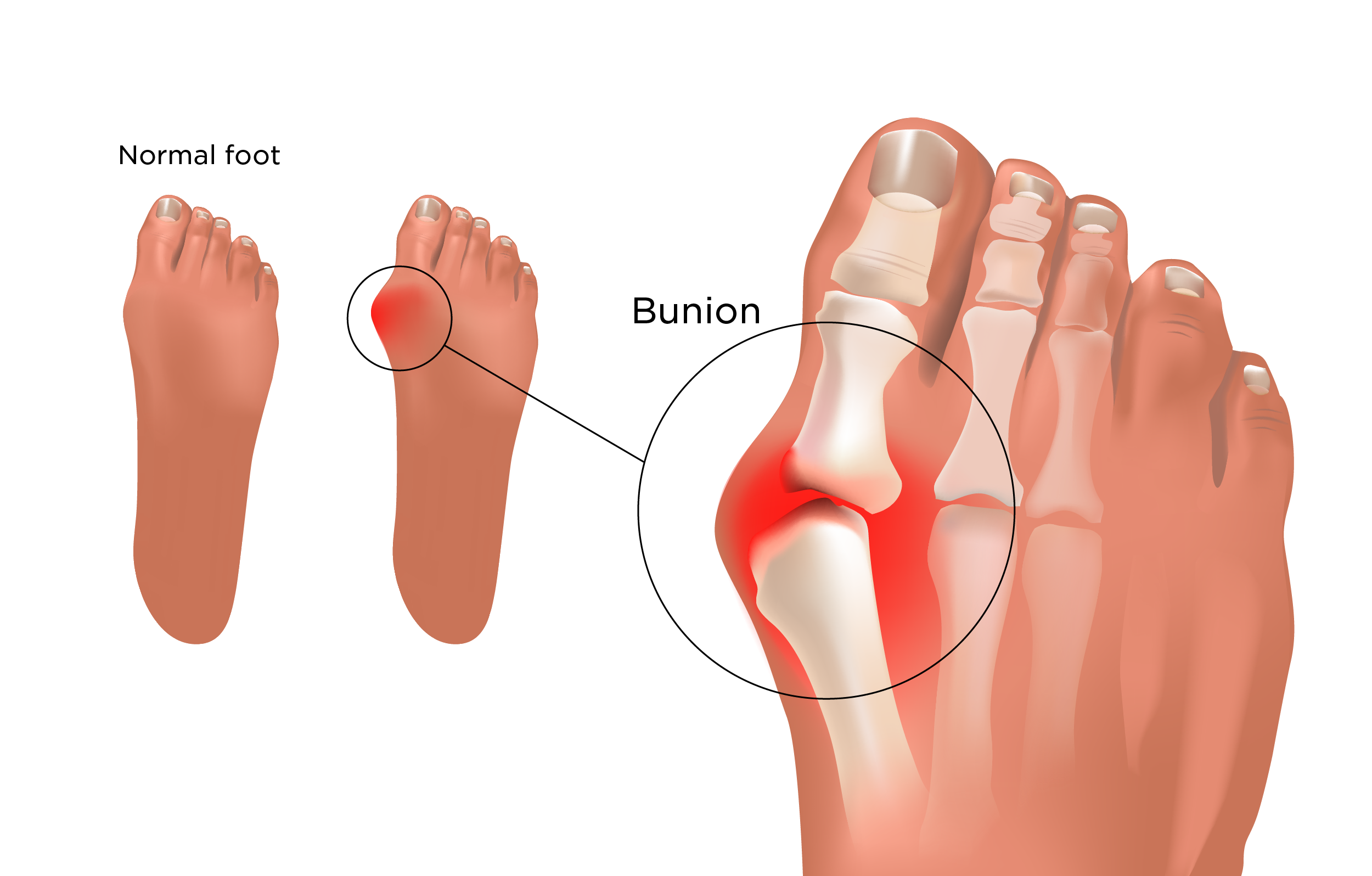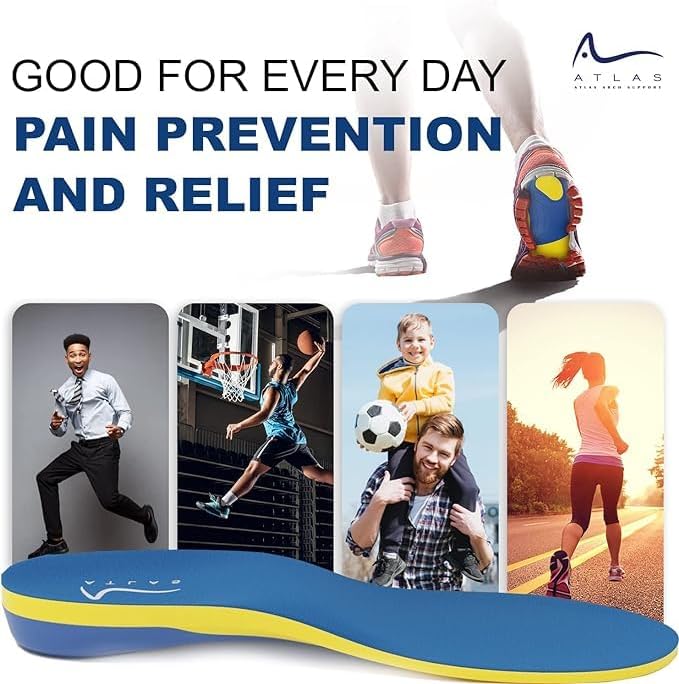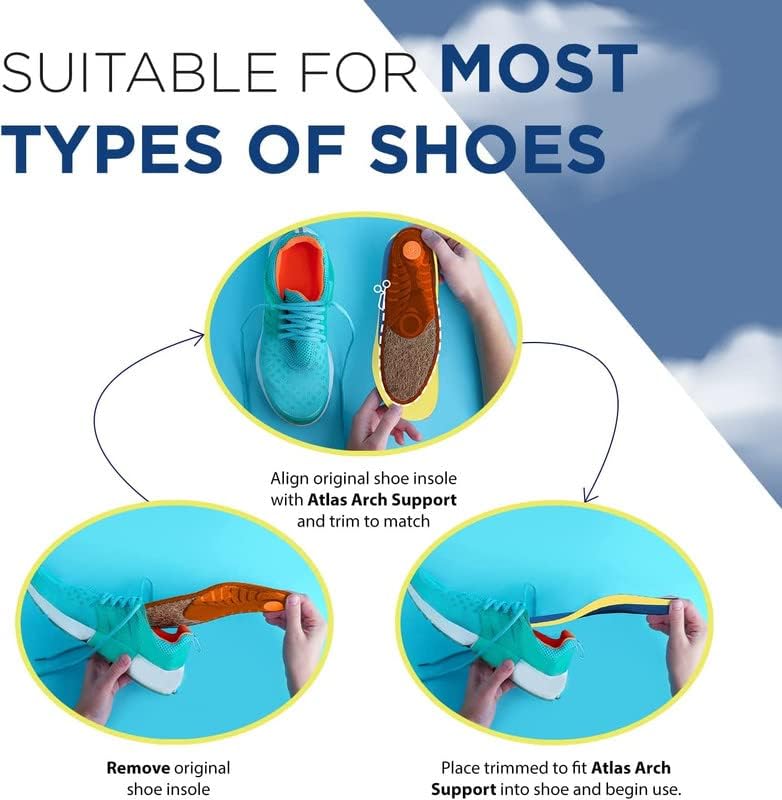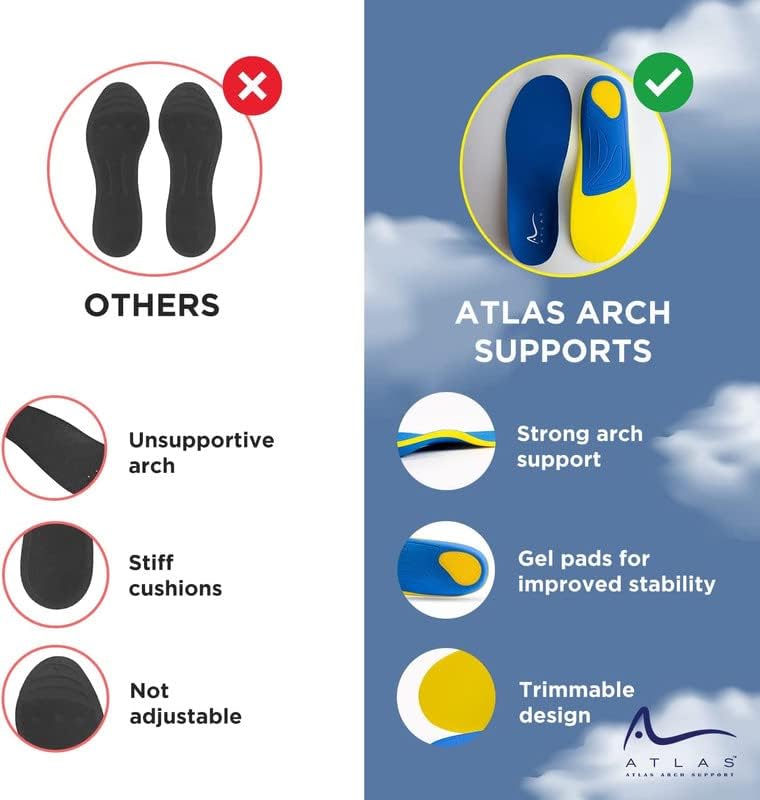Unlock the secrets to bunion prevention and relief with our comprehensive guide. Dive into understanding bunions, their symptoms, causes, and the transformative power of Atlas Arch Support Insoles for lasting comfort and improved foot health.
Introduction
Bunions, or Hallux Valgus, represent a prevalent foot condition marked by a noticeable bony bump at the big toe’s base, leading to discomfort and pain. This guide delves into the intricacies of bunions, offering insights into their symptoms, underlying causes, and effective management strategies. With a focus on innovative solutions like Atlas Arch Support Insoles, we aim to empower you with knowledge and tools for enhanced foot well-being.
Table of Contents
Understanding Bunions (Hallux Valgus)

Bunions, also known as Hallux Valgus, are a common foot ailment characterized by the formation of a bony prominence at the joint at the base of the big toe. This condition emerges when the big toe starts to angle inward towards the second toe, leading to joint misalignment and the distinctive bony bump. Grasping the causes, identifying the symptoms, and exploring effective management techniques are crucial for those affected by bunions.
Symptoms of Bunions
Bunions present a range of symptoms that shed light on the severity and progression of the condition. Early recognition of these symptoms is key to obtaining a timely diagnosis and implementing effective management strategies.
The Bony Bump: A Defining Feature
- The most noticeable sign of a bunion is the prominent bony bump at the base of the big toe. This bump is not just a superficial issue but a significant sign of the joint’s misalignment beneath.
- As the big toe increasingly leans towards the other toes, the pronounced bump becomes more evident, signaling the development of a bunion.
Inflammation and Discomfort: Hidden Challenges
- In addition to the bony bump, bunions can cause swelling, redness, and soreness around the big toe’s base. These symptoms reflect the body’s reaction to the joint’s structural changes.
- Early detection and management of these inflammatory symptoms can lead to improved comfort and symptom control.
Toe Misalignment: A Critical Indicator
- Another crucial but less visible symptom is the big toe’s gradual shift towards the smaller toes. This alteration in alignment can significantly impact the foot’s structure.
- Acknowledging this shift is essential in tackling the fundamental issues causing bunions.
Callus Formation: A Reaction to Friction
- The ongoing friction from the misaligned big toe against the second toe often results in calluses. These tough, thickened skin patches form as a protective measure against continuous rubbing.
- While calluses might appear minor, they highlight the persistent strain on the foot, underscoring the necessity for corrective measures.
Joint Stiffness and Limited Movement: Indicators of Progression
- As the condition advances, a reduction in the big toe’s mobility and increased stiffness may occur. The joint’s misalignment and structural alterations restrict the toe’s movement range, leading to stiffness.
- Early intervention to alleviate this stiffness is vital for preserving the joint’s flexibility.
Footwear Difficulties: The Practical Impediment
- A direct and practical issue arising from bunions is the challenge of finding comfortable, fitting shoes. The joint misalignment and protrusion complicate wearing standard shoes without experiencing discomfort or pain.
- Recognizing and addressing the symptoms of bunions promptly can significantly aid in managing the condition effectively, improving quality of life, and preventing further complications.
Understanding the Origins and Risk Factors for Bunions
Grasping what leads to the formation of bunions is key for both their prevention and effective treatment. Although there’s a genetic component to bunions, lifestyle and environmental factors also significantly contribute to their onset.

Genetic and Environmental Contributions
The development of bunions is often due to a combination of genetic predispositions and environmental influences. While you may inherit certain foot structures that make you more susceptible to bunions, external factors can also initiate or worsen their development. Acknowledging both aspects is vital for holistic bunion management.
Inherited Overpronation
One of the primary factors behind bunion formation is overpronation, which is the excessive inward rolling of the foot during walking. This biomechanical pattern can be inherited, making those with a family history of overpronation more likely to develop bunions.
Continuous Pressure on the Big Toe Joint
Constant pressure on the inside of the first metatarsophalangeal (MTP) joint frequently leads to bunions. This pressure is often the result of wearing narrow, pointed shoes or footwear that compresses the toes. Such constriction pushes the big toe towards the others, creating the characteristic bunion bump.
Foot Structural Anomalies
Inherent structural abnormalities in the foot can predispose individuals to bunions by altering how weight and pressure are distributed across the foot, affecting toe alignment. Addressing these anomalies is a critical step in bunion prevention and management.
Impact of Health Conditions on Joint Health
Specific health issues, particularly arthritis, can deteriorate joint health and play a role in bunion formation. The structural and functional changes in joints caused by arthritis may prompt the big toe’s misalignment, leading to bunion development as a secondary effect.
Effective Strategies for Relief and Control

Successfully managing bunions requires a multifaceted approach that focuses on alleviating discomfort and preventing further deformity. Central to this management are lifestyle modifications and supportive interventions.
Selecting the Right Shoes: A Crucial Measure
Emphasizing Fit and Comfort:
Choosing shoes with a spacious and accommodating toe box is critical in managing bunions. Footwear that provides ample room for the toes helps alleviate pressure on the bunion, reducing pain and potentially slowing the deformity’s advancement. Ensuring your shoes offer comfort and a proper fit is vital for those with bunions.
Supportive Orthotics: Custom and Over-the-Counter Options
Customized Foot Support:
Orthotic devices, tailored to the individual’s foot or readily available over-the-counter options, are instrumental in bunion care. These supports are designed to correct pronation issues, promoting proper foot alignment. They help distribute foot pressure evenly and absorb shock, thereby easing the strain on the bunion and diminishing discomfort.
Accessibility of Over-the-Counter Supports:
For immediate support, over-the-counter insoles offer a practical solution. These widely available supports can easily be added to daily footwear, providing improved foot mechanics and increased comfort, even though they lack the personalized fit of custom orthotics.
Pain Relief Strategies: Easing Bunion Discomfort
Utilizing Over-the-Counter Medications:
Non-prescription pain relievers, such as NSAIDs, are effective for controlling pain and inflammation related to bunions. Always follow the recommended dosages and consult with a healthcare provider to ensure safe use.
Physical Therapy: Enhancing Foot Health
Focused Strengthening and Flexibility:
Participating in physical therapy sessions that include exercises specifically designed for the feet can significantly aid bunion management. These routines focus on enhancing toe flexibility, improving joint mobility, and correcting muscular imbalances. Incorporating physical therapy into your treatment plan supports comprehensive bunion care, offering a holistic approach to managing symptoms and promoting foot health.
Atlas Arch Support Insoles: A Superior Choice for Bunion Relief
Atlas Arch Support insoles offer significant advantages for people suffering from bunions, thanks to their distinctive features:
Pronation Management
One of the primary exacerbators of bunions is overpronation, characterized by the foot rolling inward too much during walking. Atlas Arch Support insoles are engineered to mitigate this pronation, holding the foot in a more aligned position. This crucial support reduces the undue stress on the big toe joint, potentially decelerating bunion progression.
Balanced Weight Distribution
These insoles are adept at evenly dispersing body weight across the foot, lessening the load on the bunion-prone area. This feature is especially beneficial in alleviating the discomfort and pain during prolonged periods of standing or walking.
Alignment Correction
Atlas Arch Supports are instrumental in enhancing foot alignment by bolstering the arch. This correction diminishes the pressure on the big toe joint, a key factor in managing bunion discomfort and averting further misalignment.
Impact Absorption
Featuring superior cushioning, these insoles absorb shocks from walking or running activities, lessening the impact on the bunion. This cushioning is vital for reducing pain and enhancing comfort during movement.

Tailored Fit
Offering customization or a variety of sizes and shapes, Atlas Arch Support insoles ensure an optimal fit for different foot contours, delivering precise support where it’s most needed.
Increased Comfort
Improving overall foot comfort and minimizing pressure points, these insoles enable individuals with bunions to perform daily tasks with minimal discomfort, enhancing quality of life.
Proactive Prevention
For those predisposed to bunions, such as individuals with flat feet or a tendency to overpronate, Atlas Arch Support insoles serve as an effective preventative tool. By tackling the root causes that lead to bunions, these insoles can help in preventing or delaying their development.
In summary, Atlas Arch Support insoles stand out as a highly recommended solution for both alleviating the symptoms of existing bunions and preventing their formation, thanks to their comprehensive support and alignment features.
FAQ Section
Q: What exactly are bunions? A: Bunions are bony protrusions at the base of the big toe, caused by the toe’s misalignment towards the second toe, leading to joint misalignment.
Q: How can I recognize bunion symptoms? A: Key symptoms include a visible bony bump, swelling, redness, toe misalignment, callus formation, joint stiffness, and difficulty wearing regular shoes.
Q: What causes bunions to form? A: Bunions arise from a mix of genetic predispositions and environmental factors, including overpronation, prolonged pressure on the toe joint, structural foot defects, and certain health conditions like arthritis.
Q: Are there effective treatments for bunions? A: Yes, treatments range from choosing proper footwear and using orthotics/insoles for support, to pain management strategies and physical therapy for strengthening and flexibility.
Q: Can Atlas Arch Support Insoles really help with bunions? A: Absolutely. Atlas Arch Support Insoles offer pronation control, even weight distribution, shock absorption, and a customizable fit, all of which contribute to bunion relief and prevention.
Conclusion
Understanding and managing bunions effectively requires a comprehensive approach that addresses both the symptoms and underlying causes. With the right knowledge, lifestyle adjustments, and supportive measures like Atlas Arch Support Insoles, it’s possible to achieve significant relief from bunion discomfort and improve your foot health. Embrace these strategies to walk more comfortably and confidently, free from the constraints of bunions.









